preparing hearts and minds
9 Simple Ways for Catechists to Cultivate a Living Faith



9 Simple Ways for Catechists to Cultivate a Living Faith
© 2020 Joe Paprocki
All rights reserved.
Cover and interior design by Loyola Press
Cover art credit: Yasonya/iStockphoto/Getty Images, natrot/iStockphoto/Getty Images, and rimglow/iStockphoto/Getty Images.
Cartoons by Leighton Drake
Cartoons © 2020 Loyola Press
Unless otherwise indicated, Scripture quotations are from Holy Bible, New International Version®, NIV® Copyright ©1973, 1978, 1984, 2011 by Biblica, Inc.® Used by permission.
All rights reserved worldwide.
ISBN-13: 978-0-8294-5003-3
Library of Congress Control Number: 2020934389
I dedicate this book to Barbara and Jim Campbell, who taught me how to till the soil, plant the seeds of God’s Word, nurture growth, and reap the harvest.
The Catechist’s Toolbox: How to Thrive as a Religious Education Teacher
A Well-Built Faith: A Catholic’s Guide to Knowing and Sharing What We Believe
The Bible Blueprint: A Catholic’s Guide to Understanding and Embracing God’s Word
Living the Mass: How One Hour a Week Can Change Your Life (with Fr. Dominic Grassi)
Practice Makes Catholic: Moving from a Learned Faith to a Lived Faith
Beyond the Catechist’s Toolbox: Catechesis That Not Only Informs but Also Transforms
7 Keys to Spiritual Wellness: Enriching Your Faith by Strengthening the Health of Your Soul
Under the Influence of Jesus: The Transforming Experience of Encountering Christ
The Catechist’s Backpack: Spiritual Essentials for the Journey
A Church on the Move: 52 Ways to Get Mission and Mercy in Motion
Living the Sacraments: Finding God at the Intersection of Heaven and Earth
I would like to thank the following people: Leighton Drake for once again providing such excellent and engaging cartoons to enhance this book; Joe Durepos for putting the wheels in motion for this book right before riding off into the sunset (retirement); Carrie Freyer for convincing me to make this book part of the “Toolbox” family; Maria Cuadrado for shepherding the manuscript through the approval process; Vinita Hampton Wright for once again providing exquisite editing; Meghan Murphy-Gill for copy editing; and Donna Antkowiak for the beautiful design of this book.
Introduction: Loosening the Compacted Soil of Hearts and Minds
When soil gets compacted, seeds cannot take root. Unless the soil is loosened, air, water, and nutrients cannot penetrate, and those seeds that do germinate cannot break through the surface of the soil.
In a similar way, the seeds of God’s word cannot take root in hearts that have been hardened. In today’s increasingly secular world, hearts and minds have grown compacted and much more difficult to penetrate. As a result, much of our work in faith formation is like the seed that was thrown on rocky ground: it is unable to take root (Matthew 13:5–6).
Too many of our efforts in faith formation go into finding ways to either throw more seed or find bigger, better seeds to throw, when what we really need to be doing is preparing the soil.
If we want the seeds of God’s word to take root, we need to prepare the soil of people’s hearts and minds so that God’s word may penetrate, obstacles that compete for nutrition may be removed, and faith may take root, break through the surface, and grow, transforming the world. Too many of our faith formation efforts go into finding ways to either throw more seed or to find bigger, better seeds to throw, when what we really need to do is prepare the soil.
Despite alarmingly dwindling numbers of people adhering to the Catholic faith, we, as a church, continue—for the most part—to sow God’s word pretty much as we have done since the previous century when the soil we were
sowing in was vastly different from the soil we tread upon today. In bygone days, it sufficed (or at least we thought it did) to focus our efforts almost exclusively on teaching children by relying on an academic approach (emphasizing doctrinal orthodoxy) once a week for 60–90 minutes in a parish religious education program or daily for 30–45 minutes in a Catholic school. Today, we continue to rely on a model of faith formation that served the church well 50–75 years ago but is now woefully inadequate and ill-equipped to form disciples of Jesus Christ in a rapidly changing and complex world that, more and more, considers itself to be post-Christian and no longer receptive to Christian thought.
Today, we continue to rely on a model of faith formation that served the Church well 50–75 years ago but is now woefully inadequate and ill-equipped to form disciples of Jesus Christ.
The traditional approach to sowing the seeds of faith worked well in the environment of a previous era in which the soil had the following attributes:
> People tended to live in predominantly homogenous communities and, for the most part, shared the same values and traditions.
> One parent (usually the mother and often a grandparent) stayed at home and assumed the responsibility of imparting to the children, not only Catholic values, but also devotions, practices, and traditions.
> The flow of information (and therefore, conflicting values) into the home was easily controlled before the advent of cable TV, the Internet, and social media
> respect for authority—including the clergy and hierarchy of the Church—was pervasive and unquestioned.
> The U.S. public school system tended to mirror Christian (albeit Protestant) values.
> Going to church on Sunday had little to no “competition.”
“The minute you walk outside of your church on Sunday, you’re in mission territory.”
In his book Will Our Children Have Faith? author John Westerhoff explains that an “ecology of institutions” [see sidebar]—an ecosystem, so to speak—supported the practice of the Christian faith. Soil, of course, is an ecosystem: a physical environment containing a complex network of organisms. The soil of the 21st century no longer includes the organisms (institutions) that once provided a sustainable environment for God’s Word. As a result, hearts that once were open to faith have become compacted, and the soil needs to be loosened up—prepared—if it is going to once again become an environment that can sustain the living word of God. If that’s going to happen, we’re going to need some new strategies for doing faith formation.
So, when it comes to tackling this notion of preparing the soil, where do we begin? I’d like to lay the foundation for our discussion by comparing the challenge we face today with a challenge someone faced a hundred years ago. This someone—Claude C. Hopkins—discovered an approach to more effectively market a product, Pepsodent toothpaste, to an audience that, until that time, was simply not receptive to the notion of brushing one’s teeth. Mr. Hopkins’s approach involved adding an ingredient to Pepsodent toothpaste that made one’s tongue tingle and provided a minty-fresh taste. The ingredient did nothing to prevent cavities, but it did create a trigger: it provided people with a sensation indicating that something was happening when they brushed their teeth; they could feel, taste, and smell a tangible result and experience a “reward” for brushing their teeth. Experts in marketing know that consumers appreciate (and, in fact, demand) “some kind of a signal that a product is working” (Tracy Sinclair). Mr. Hopkins’s approach was so effective that it explains why, a hundred years later, brushing our teeth is a daily routine for most people.
A few millennia before Hopkins appeared on the scene, Jesus of Nazareth and then his followers, known as “the Way,” understood this concept of people needing concrete evidence that what they were being invited to consider would
—Bishop Robert BarronIntroduction: Loosening The Compacted Soil Of Hearts And Minds
The disciples understood that people needed to see a sign of the transformation that the Holy Spirit brought about in them. The reason that 3000 people joined their ranks on that first Pentecost was because those people saw that the disciples had discovered a better way of living. The disciples should have been afraid but were not; they should have been sad but were not. Their words, actions, and attitudes were triggers for those desiring a better way.
be a worthwhile and, indeed, necessary investment. People need signs. Jesus himself insisted, “No one lights a lamp and puts it in a place where it will be hidden, or under a bowl. Instead they put it on its stand, so that those who come in may see the light.” (Luke 11:33). Jesus performed signs for people to see. When John the Baptist questioned whether Jesus was “the one,” Jesus replied, “Go back and report to John what you hear and see: the blind receive sight, the lame walk, those who have leprosy are cleansed, the deaf hear, the dead are raised, and the good news is proclaimed to the poor.” (Matthew 11:4–5).
The disciples’ proclamation of an alternative reality to people who did not yet know Jesus Christ is referred to as the kerygma, a Greek word that means “preaching.” The kerygma is a simple, basic, bold, and inspiring proclamation and offer of God’s grace that invites people to consider a better way of living through a relationship with the risen Christ. It is an evangelizing message: a message designed to bring about conversion. Where can we see this strategy being used effectively today? Unfortunately, not so much in the church as in the secular world. Thanks to Claude C. Hopkins, this strategy is utilized regularly in the marketing world, most specifically, through TV commercials that continually promise us a better way to live. To illustrate how formulaic this strategy is, permit me to try to sell you on an imaginary product designed specifically for catechists such as yourself. Pay close attention to the following script, and then I’ll tell you how it is kerygmatic.
The kerygma is a simple, basic, bold, inspiring proclamation designed to invite people to consider embracing a better way of living.
Attention catechists! Are you tired of feeling like your lessons are falling flat? Do you struggle with a nagging sense that you are not getting through to your students? Are you tired and worn out by students who just don’t seem interested? If so, you need to try brand new Catechetic-O’s!
Hi, I’m Joe Paprocki, author of the best-selling book, The Catechist’s Toolbox, and the long-running blog, The Catechist’s Journey. I’ve been in the catechetical ministry for over four decades, and I know what you’re going through. That’s why I invented Catechetic-O’s, a high-energy cereal made just for catechists and loaded with the essential ingredients you need to be creative, innovative, and engaging as a catechist. After just a week of eating Catechetic-O’s, I guarantee that you’ll develop the capacity to plan and implement faith-formation sessions that will have your students wondering if you’re the reincarnation of one of the doctors of the church!
How are Catechetic-O’s different from other cereals? It’s the only cereal that includes a secret ingredient I developed called Evangelate, which is like having fifty mini catechists in your head helping to stimulate creativity and innovation that even the most seasoned catechist could only hope for. So put an end to the boring sessions that are tragically causing young people to disappear from the church in alarming numbers after confirmation. Buy your first box of Catechetic-O’s now for only $9.99 and watch as disciples begin popping up all around you!
But wait! There’s more! Order in the next fifteen minutes and get a free bottle of Liquid Catechetic-O’s for those times when you need an extra boost for important lessons such as sacramental preparation.
Your students deserve a catechist who is on fire! All it takes is one bowl a day. Join the growing army of satisfied catechists who are powered by Catechetic-O’s and unleash your inner Charles Borromeo! To order your first box of Catechetic-O’s, call the number on your screen or visit www.catecheticos.com. You won’t be disappointed, and before long, you’ll be telling other catechists to get with the Catechetic-O’s program! Don’t delay another moment!
Now, before you wander off and try searching for the Catechetic-O’s website (which does not exist), let me point out to you nine marketing strategies that can be found in this script that are formulaic in TV ads and that seek to lure potential customers to a “better way” of living.
Point out that potential customers’ current “way” is broken or unsatisfactory, needs to be repaired, fixed, or replaced, and here’s the solution. (“Are you tired of . . . ?” “Well, now there’s . . .”)
Assure that this message/ invitation is coming from a trusted source. (“Hi, I’m . . .”)
Promise and demonstrate amazing things that this “better way” offers. (“It can do the following . . .”)
Make a claim about this better way that that is so incredible that it defies logic. (“It can even . . .”)
Promise that the story gets even better (“But wait, there’s more!”)
Invite potential customers to this better way of living. (“Don’t be left out.”)
Aim for the heart and provoke emotions that will lead to a change of heart. (“Stop the heartache of . . .”)
Promise that potential customers’ lives will never be the same but that they’ll need to commit to this better way. (“In just 30 minutes a day . . .”)
Claim that potential customers will be so satisfied, they’ll feel compelled to persuade others to embrace this better way. (“Soon, you’ll be telling your neighbors . . .”)
Why do marketers and advertisers follow these nine formulaic strategies?
Because they work! After 30, 60, or 90 seconds of an advertisement that follows this formula, varying numbers of people become predisposed to purchasing the product or service advertised while numerous others become
Tell others about the truth that sets you free.
—Pope Benedict XVI
interested enough to file the information away in their heads (or their online shopping cart) for later consideration. The reason that so many people pick up the phone or go online and order products, resources, and services after viewing a commercial about them is that, like the kerygma , the strategy is effective: it is a simple, basic, bold, inspiring proclamation designed to invite people to consider embracing a better way of living made possible solely by the product or service being promoted. It is an “evangelizing” strategy: designed to convert people (that is, change their thinking and behavior) so that they will purchase the product or resource in question.
Like it or not, the business world and many other entities in the secular world are evangelizing, and we are in competition with them for hearts and minds.
In church-talk, we use the term pre-evangelization to describe the work that needs to be done prior to full-blown evangelization and catechesis. Unfortunately, in our eagerness to evangelize and catechize as a church, we have often forgotten to pre-evangelize.
Simply put, pre-evangelization is the work of preparing people (predisposing them) to receive the Good News of Jesus Christ. Pastoral minister and author Matt Halbach writes, “an evangelization process that begins with an initial proclamation of the gospel risks sowing the seed of God’s word in untilled soil, which places the quality of the conversion in jeopardy.
If you think I’m exaggerating or stretching the metaphor, ask yourself why there is a book available in the business section of Amazon.com—a book that has nothing to do with religion—titled Creating Customer Evangelists. Like it or not, the business world and many other entities in the secular world are evangelizing, and we are in competition with them for hearts and minds. Keep in mind, however, that I am not advocating that we become slick, fasttaking salespeople in imitation of TV commercials. I’m pointing out that modern marketing efforts employ a strategy that was utilized effectively by the early church to invite people to join the Way and that we need to reclaim our evangelizing mojo.
In other words, before the Good News is proclaimed, time is needed to prepare others to fully receive its message” (“New Pope, New Evangelization, New Return to Old (but Good) Ideas,” Catechetical Leader, September 2013). Pre-evangelization is focused, not so much on catechetical instruction but rather on forging a connection, awakening desire, sparking interest, inspiring imagination, and removing obstacles, all while avoiding church jargon. Pre-evangelization draws attention to issues related to basic human needs such as security, love, and acceptance as well as people’s own desires for goodness, hope, love, truth, beauty, meaning, and purpose. The goal is to establish a relationship of trust and to lay the foundation for the proclamation of the gospel and eventual formal catechetical instruction. We can learn a thing or two about pre-evangelization from the world of marketing, which recognizes the reality of what they refer to as “the customer journey.” Marketers know that while some buying is done on impulse, customers take their time when it comes to major investments and need to do their homework. In response, marketers have developed a tool known as “the marketing funnel” to take people where they are on their journey. This funnel typically consists of four steps, which in many ways correspond to the four stages of the Rite of Christian Initiation for Adults (RCIA): inquiry (doing a search), catechumenate (placing something in your “cart” but not yet ready to proceed to “checkout”), purification and enlightenment (completing the purchase), and mystagogy (returning for more information and tips, added value, and posting comments and customer feedback for the benefit of others). Let’s take a closer look at these four steps.
Awareness. Because this customer journey begins with searching, the first strategy of the marketing funnel is to raise awareness of two things: the consumer’s needs and the seller’s solution to those needs. The goal of this first step is to educate the potential customer, show the value of your product or service, and establish a relationship. This is the essence of pre-evangelization whereby the soil of people’s hearts and minds is loosened and prepared.
Consideration . As potential customers become more aware of available options, the second step of the marketing funnel is to invite them to consideration in which the goal is to deepen your relationship with them, further introduce them to your product/service, and personalize/tailor the connection between what you are offering and what
the customer needs (targeting). This can be compared to the period of catechesis and evangelization that follows pre-evangelization. Conversion. Next, after potential customers have learned about the value and benefits of your product or service and what the cost to them will be, the third step of the marketing funnel is to invite conversion (there’s that “religious” vocabulary again) in which the customer makes a decision about purchasing. In the RCIA, this decision to commit to Jesus is finalized during the period of purification and enlightenment (Lent) and ritualized with the Sacraments of Initiation at the Easter Vigil (think of how sales departments sometimes ring a bell to ritualize the completion of a sale).
Loyalty/Advocacy. Good marketers know that the customer journey should not end with the purchase; the relationship should continue. As a result, the fourth step of the marketing funnel is known as loyalty/advocacy. The goal here is to retain customers and instill loyalty by delighting them with ongoing helpful information and resources that will hopefully compel them to voluntarily promote your product or services and invite others to consider them. One of the reasons too many people “drop off” after receiving confirmation or completing the RCIA is because we as a church often act as though the “sale” is complete and we move on to the next batch of potential customers. An evangelizing church seeks ways to maintain, build, and strengthen the relationship with all its members by delighting them with ongoing formation: knowledge, skills, and resources to nourish their spirituality and deepen their relationship with Jesus and the church, so that they will voluntarily promote the gospel and invite others to consider discipleship, thus beginning the cycle all over again.
With that whole process in mind, let’s return our attention to the first step: pre-evangelization, which is where we begin preparing hearts and minds. This step is characterized by honest, informal, non-judgmental, and non-confrontational dialogue rather than the presentation of formal doctrine. A good example of this was brought to my attention by a priest
Pre-evangelization is characterized by honest, informal, non-judgmental, and nonconfrontational dialogue.Introduction: Loosening The Compacted Soil Of Hearts And Minds
friend who said that for years he had begun his marriage preparation sessions by asking the couple why they wanted to be married in the church. He eventually realized that this question immediately put the couples on edge as they sought the right answer that would permit the process to move forward. The priest changed his approach and now begins sessions by asking the couples to share how they met and fell in love. The first approach was focused on what the church wants, needs, expects, and requires. The second approach, which is focused on the couple and their story, resulted in the establishment of trust, a feeling of affirmation, and the beginnings of a relationship with the church. He initiated a spiritual conversation—one that fostered trust and a sense of security and respect. Within a context such as this, it becomes natural and less threatening for a pastoral minister to eventually invite participants to pray with him or her and to invite them to share intercessions (pray for the needs of others). The goal of pre-evangelization is to lay the foundation for moving to a deeper and more formal exploration of the Catholic faith, but that can’t happen unless hearts and minds have been prepared.
Spiritual conversations can be prompted by questions such as the following:
1. Who has been an inspiration in your life?
2. What have been the milestones in your life?
3. What do you like or enjoy most about what you do?
4. Who or what has shaped you into the person you are today?
5. What lessons have you learned as a result of . . . ?
6. What makes you happy?
7. What dreams do you still wish to pursue?
Eventually such questions can become more God-centered, such as:
1. How would you describe your relationship with God right now?
2. What obstacles are standing in the way of you growing closer to God?
3. Who is your favorite saint?
4. What is your favorite Gospel story?
An elderly and curmudgeonly pastor reluctantly attended an evangelization workshop to seek out strategies for stemming the rising tide of young families who were no longer attending Sunday Mass. Of all the strategies, he selected one that involved visiting former parishioners’ homes for dinner, thinking, At least I’ll get a good meal out of the experience. When the pastor arrived at the home of one family, the parents invited him to sit in the living room with their young son while they prepared the meal in the kitchen. Not sure of how to make conversation with the young boy, the pastor asked him what they were having for dinner. The boy replied, “Goat.” “Goat?” replied the startled pastor. “Are you sure about that?” “Yes,” said the boy. “When my parents were getting ready for work this morning, my mom told my dad, ‘Remember, we’re having the old goat for dinner tonight.’”
As we forge ahead in this book, I am going to explore these nine strategies from the kerygma—the disciples’ first proclamation of the Way to people who had not yet encountered Christ—that we catechists can and must use in our faith formation to be more evangelizing catechists who know how to prepare hearts and minds! Just as consumers need some kind of signal that a product is working, those we teach need some kind of signal that following Jesus is a better way to live. Join me as we look at these nine strategies that are at the heart of the amazingly effective kerygma —the first proclamation of the Good News of salvation by the disciples that effectively “prepared the soil” and predisposed hearts and minds to accept the gospel message and laid the foundation for more than 2,000 years of Christianity:
1. Strategy #1. Point out that potential believers’ current “way” is broken or unsatisfactory and needs to be repaired or replaced. (We begin by drawing attention to our human brokenness and we proclaim a better way to be human: an alternative known as the reign of God.)
2. Strategy #2. Assure that this message and invitation is coming from a trusted source. (We offer assurance that Jesus Christ, the Son of God, is our Savior and that he and his disciples—the church—can be trusted.)
3. Strategy #3. Promise and demonstrate amazing things that this “better way” offers. (We tell the stories of Jesus healing the sick, opening the eyes of the blind, calming the storms, walking on water, and changing our own lives.)
4. Strategy #4. Make a claim about this better way that that is so incredible that it defies logic. (We explain that Jesus died for us so that we might have eternal life.)
5. Strategy #5. Promise that the story gets even better (but wait, there’s more!). (We proclaim that Jesus Christ rose from the dead and lives and remains with us.)
6. Strategy #6. Invite potential believers to this better way of living. (We extend an invitation to have your life transformed by following this better way of Jesus.)
7. Strategy #7. Aim for the heart and provoke emotions that will lead to a change of heart. (We call people to repentance: a letting go of old ways in order to embrace a better way.)
8. Strategy #8. Promise that potential believers’ lives will never be the same, but that they will need to commit to this better way of living. (Offer opportunities for ongoing deepening of this relationship with Jesus Christ.)
9. Strategy #9. Claim that potential believers will be so satisfied, they’ll feel compelled to persuade others to embrace this better way. (Empower others to go forth to share this better way with others.)
Today more than ever, the world needs to see evidence that there is a “better way”—a different way of being human that is not guided by the bankrupt values and philosophies of a broken world but by the life-giving message of selfless and redeeming love proclaimed by Jesus Christ. This is the quest of the evangelizing catechist: to provide convincing evidence that there is indeed a better way—the way of Jesus Christ—which surpasses all other ways. And these nine strategies effectively “prepare the soil” so that hearts and minds can become more receptive to the Good News of Jesus Christ.
Today more than ever, the world needs to see evidence that there is a “better way.”
Proclaiming the gospel has never been easy. And it seems to be getting harder. I’m sure you’ll agree with me that, in recent times, it has become overwhelmingly difficult to proclaim the Good News of Jesus Christ given the seemingly irreparable damage the Roman Catholic Church has sustained as a result of the clergy sex-abuse scandal and cover-up by church leaders. And yet in my travels across the country, I continue to come across countless numbers of catechists and pastoral ministers like yourself who remain fiercely undaunted when it comes to the task of fulfilling our baptismal call to proclaim the gospel message to others in word and in deed. Are we disillusioned? At times. Are we saddened? Yes. Are we angry? Oh, hell yes! Are we giving up? Oh, hell no! We know that, while the church has been damaged, Jesus and his life-giving message are invulnerable. And we fully intend to continue proclaiming that Good News to all who seek a better way.
To do that, however, we are going to need to loosen the compacted soil of hearts and minds to predispose people to be receptive to God’s word. For the past few decades, I have had the privilege of journeying with an army of no fewer than a half-million catechists, as we have attempted to become more effective at proclaiming the gospel. During that time, I have never seen challenges as great as the ones we face today—challenges that have convinced many people to close their minds and hearts to the message of Christianity. Farmers and gardeners know that compacted soil can be returned to good health but not without some serious tilling! I am convinced that, with the help and guidance of the Holy Spirit, we can effectively prepare the soil of hearts and minds to create a fertile environment for the planting of the seeds of God’s word. We do so, “hard pressed on every side, but not crushed; perplexed, but not in despair; persecuted, but not abandoned; struck down, but not destroyed” (2 Corinthians 4:8–9). The Good News is that sin and death do not have the last word. Our institutional church may be broken, but the Spirit of our Lord Jesus Christ—a Spirit of love, joy, peace, patience, kindness, goodness, faithfulness, gentleness, and self-control—prevails. From death comes new life. And you and I are called to give witness to that to the ends of the earth. Let’s get to work preparing the soil in the fields of the Lord!
Let’s get to work preparing the soil in the fields of the Lord!
> What, in your mind, has caused the “soil” of people’s hearts and minds to become “compacted” or less receptive to practicing faith than in times past?
> What is your understanding of pre-evangelization? How is it different from evangelization per se?
> What changes in the “soil” of society and culture have made it more difficult to sow the seeds of faith today?
> What is your understanding of the kerygma? What does it mean to say that our faith-formation efforts today must be more kerygmatic?
> When were you persuaded by an advertisement or a TV commercial to make a purchase? What specifically persuaded you to do so?
> What does it mean to say that the business world is “evangelizing” more effectively than the church is?
> Of the nine kerygma strategies (see pg. xx), which one strikes you as most urgently needed? Which one do you personally need to improve?
But the seed falling on good soil refers to someone who hears the word and understands it. This is the one who produces a crop, yielding a hundred, sixty or thirty times what was sown.
Matthew 13:23Loving God, prepare the soil of my heart that I may become more receptive to your sowing of the Word in my life. Help me, in turn, to prepare the soil of people’s hearts so that your Word may take root and yield a bountiful harvest. Amen.
Have you ever noticed how many advertisements begin with, “Are you tired of . . . ?” The not-so-subtle message is that something is missing from your life or that something in your life, as you live it now, is broken and needs repair. For example, an ad for a flu remedy will go out of its way to illustrate just how miserable it is to have the flu—something that resonates with anyone who has endured this misfortune.

Often, these TV commercial depictions of what is broken or missing from our lives are exaggerated to the point of being comical. Ads for new kitchen gadgets show frustrated cooks in the kitchen floundering about with ineffective utensils that take too long, don’t slice well, require too much effort, or create a catastrophic mess. If you are the unlucky owner of such obsolete utensils, the message is clear: Your life is miserable. After pointing out this misery, however, the ad quickly announces that it is offering a solution, a new product that will solve all your problems and make all these headaches disappear. In essence, they promise a better way of living.
Remember, the first step in marketing is to respond to those who are searching by raising awareness about two things: customers’ needs and “I’ve decided
the “solution” a product or service offers. This step involves creating an urgent sense of need. Likewise, the first step in preparing hearts and minds and in being a more evangelizing catechist is to invite those you are teaching to recognize that something is missing from their lives or that the lives they are living are broken, in need of repair, or at least unfulfilled.
The first step in marketing is to create an urgent sense of need.
As the Apostles did, we must proclaim that our current reality is broken (and that we are the unfortunate heirs of that brokenness) and that God has intervened through his only Son, Jesus Christ, to offer us an alternative known as the reign of God: a better way of living and being human.
In a homiletics course I once took, the professor wisely suggested that every homily should begin with “bad news” and proceed to the “Good News” of Jesus Christ. He referred to how comedians often do “good news/bad news” jokes such as this: A doctor calls his patient and says, “I have good news and bad news. I got your test results back and you have only 24 hours to live!” The patient responds, “That’s terrible, doctor, what’s the good news?” The doctor responds, “Actually, that was the good news. The bad news is, I was supposed to call you 24 hours ago!”
Proclaiming brokenness is NOT to proclaim doom, to act as “Debbie downers,” to make people feel miserable or guilty about their present state of life, or, worst of all, to point fingers at people and tell them that they are worthless sinners and must repent. In ages past, this “hellfire and brimstone” approach to evangelization may have been moderately effective in frightening people into changing their lives for fear that they might face an eternity in the fires of hell. In today’s more sophisticated world, such an approach simply will not work. Instead, we who minister in the name of Jesus need to pastorally empathize with the hurt, pain, or emptiness that people— including ourselves—are carrying around in one form or another.
The professor went on to explain that, in a homily (and for our purposes, in faith formation), we reverse the “good news/bad news” formula and rely on a “bad news/good news” approach. We begin by inviting our listeners/learners to consider some aspect of their reality that is broken—something that resonates with people so that as they listen to us, they are thinking, Yeah, that’s the story of my life!
Before we proclaim the Good News, we need to identify the reasons they need to hear it.
Before we proclaim the Good News, we need to convince people that they need to hear it, and we do that by helping them get in touch with their own incompleteness, emptiness, and/or brokenness. We need to explain how we humans are prone to dysfunctional behavior and cannot save ourselves from such dysfunctions but need an intervention that sets us on the road to recovery.
The truth is, too many of us are walking around with narratives that are unhealthy, unfulfilling, and, dare I say, dangerous to our own well-being and the well-being of others. Some of these narratives tell us that we are . . .
Still other narratives tell us that in order to be happy, we need . . .
Many people carry a damaged view of their story and themselves because they have suffered some hard knocks. At any given time, any gathering of humans will include varying percentages of people suffering from unemployment, chronic pain, divorce, depression, broken relationships, economic woes, domestic abuse, stress of caretaking, thoughts of suicide, loss of a loved one, sexual abuse, anxiety, loneliness, chronic disease, bullying, and poor self-image, just to name a few.
and reject false narratives in place of the saving narrative of Jesus Christ.
The Good News of Jesus Christ is that these false, misleading, damaged, and broken narratives can and must be changed! Jesus proclaims a different story about a new reality called the reign of God in which we are rescued (from sin) restored (to our intimate relationship with the Father) and reassured (by a loving God who provides us with everything we need and is with us always). Jesus’ proclamation of the Gospel begins with the word, “Repent!” which means to “change your mind.” To evangelize is to invite people to change their minds and reject false narratives in place of the saving narrative of Jesus Christ. Evangelization invites people to recognize how compacted our collective hearts and minds have become and to till the soil of their own lives in order to be capable of imagining new possibilities.
How do we go about catechizing to facilitate repentance—the changing of minds? What might this look like in a catechetical setting? To illustrate, I’m going to look (at the time this was written) to the Gospel for the upcoming Sunday, the Second Sunday of Lent, which is the story of the Transfiguration (Mark 9:2–10).
1. I begin by reading and reflecting on the Scripture passage, asking myself, What is the Good News of this story? (It may be helpful to look at some commentaries). Know that there is not just one correct answer to this question, “What is the Good News of this story?”
After six days Jesus took Peter, James and John with him and led them up a high mountain, where they were all alone. There he was transfigured before them. His clothes became dazzling white, whiter than anyone in the world could bleach them. And there appeared before them Elijah and Moses, who were talking with Jesus. Peter said to Jesus, “Rabbi, it is good for us to be here. Let us put up three shelters—one for you, one for Moses and one for Elijah.” (He did not know what to say, they were so
To evangelize is to invite people to “change their minds”
frightened.) Then a cloud appeared and covered them, and a voice came from the cloud: “This is my Son, whom I love. Listen to him!” Suddenly, when they looked around, they no longer saw anyone with them except Jesus. As they were coming down the mountain, Jesus gave them orders not to tell anyone what they had seen until the Son of Man had risen from the dead. They kept the matter to themselves, discussing what “rising from the dead” meant.
2. In my reflection, I am led to focus on the phrase, “This is my Son, whom I love. Listen to him!” (Mark 9:7).
3. In my mind, then, the good news of this story is that we have access to the voice of God through Jesus Christ, who is truly God from God, Light from Light!
4. The bad news, then, is that we live in a time of confusion and “alternative facts.” We often don’t know who to listen to. We find ourselves lost, confused, and even in despair, not knowing where truth can be found.
Fruitfulness comes out of brokenness.
—Henri NouwenFor my lesson, I would simply reverse the order of the above and start by inviting my learners to recognize that when we turn on the TV or explore social media, we are bombarded by so many voices claiming to speak the truth that it can make our heads spin! For younger children who may not be as aware of current events in the news, I would invite them to recognize that they hear a lot of mixed messages from their friends about what is right and what is wrong and that it creates a lot of stress and confusion for the them. Then, I would announce the good news: “In today’s gospel, however, we have good news! We learn that the voice of Jesus is the voice of God and therefore can be trusted. It is a voice that cuts through all the confusion and shows us the way. It is a voice that we need . It is to our benefit to ‘Listen to Him’ rather than to the many voices that steer us down the wrong path.” This session, then, is designed to bring about repentance: a change of mind about whose voice we should be listening to in order to overcome our brokenness.
Throughout the year, Father Don preaches inspiring homilies at Sunday Mass, urging his congregation to become an army of ministers reaching out to people who are experiencing brokenness. He even created different “branches” of his army for people to serve in: one branch served those who were homeless, another served those with chronic illness, another served those who experienced the loss of a loved one, and so on. One Sunday after Mass, inspired parishioners were lining up as usual to join the various branches of “Father Don’s Army” when he noticed one young man quickly dashing to his car in the parking lot. He caught up with him and asked him why he was in such a hurry to leave and why he didn’t want to join “Father Don’s Army.” The young man said, “Oh, I’m already a member of your army Father.” Father Don replied, “I hate to say it, but I don’t recall seeing you here before except maybe on Christmas and Easter. What branch of my army do you belong to?” The young man replied, “Secret Service.”
It is no coincidence that we begin our celebration of the Mass with the Penitential Act in which we acknowledge our brokenness.
I confess to almighty God and to you, my brothers and sisters, that I have greatly sinned, in my thoughts and in my words, in what I have done and in what I have failed to do,
[Pray while striking the breast three times.] through my fault, through my fault, through my most grievous fault;
(The Roman Missal)
It is this very brokenness that is the key to our salvation, for, without acknowledging our
Without acknowledging our brokenness, we remain unreceptive to God’s grace: the soil of our hearts and minds remains compacted.
brokenness, we remain unreceptive to God’s grace: the soil of our hearts and minds remains compacted.
When we embrace our brokenness, we become vulnerable, and it is through the very “cracks” in our being that the grace of God can and will enter. As followers of Jesus, we are called to let our light shine before all. However, it is crucial to remember that this light is coming from beyond ourselves and can only shine before all if it can get through the cracks in our being. Once it does, it floods through and becomes visible to all. This is precisely why Jesus went after the Pharisees and what he called their self-righteousness. Jesus tells the parable of the Pharisee and the tax collector in which the two men go up to the Temple to pray.
The Pharisee stood by himself and prayed: “God, I thank you that I am not like other people—robbers, evildoers, adulterers—or even like this tax collector. I fast twice a week and give a tenth of all I get.” But the tax collector stood at a distance. He would not even look up to heaven, but beat his breast and said, “God, have mercy on me, a sinner.” I tell you that this man, rather than the other, went home justified before God. For all those who exalt themselves will be humbled, and those who humble themselves will be exalted. (Luke 18:11–14)
The reason Jesus insisted that sinners are closer to the Reign of God than the Pharisees is precisely because many sinners are painfully aware of their brokenness and are not deluded by any sense of self-righteousness which is a refusal of God’s grace. Just as the Mass begins with our admission of brokenness (notice how, in the Penitential Act mentioned above that we are directed to strike our breast in imitation of the tax collector), our role as catechists is to invite and enable those we teach to recognize and embrace their brokenness and shed any delusion of self-sufficiency, as the first step toward salvation. We must convince others that the message we are sharing—the Good News—is not just something nice—it is something we all need. To proceed otherwise is to ignore the very reality of the human condition: to be human is to be imperfect.
Our role as catechists is to invite and enable those we teach to recognize and embrace their brokenness.
Here I offer the following examples of doctrinal topics followed by the “bad news” for which they are antidotes. Remember, each of these doctrinal topics is multivalent, which means that there are numerous ways of interpreting the Good News it proclaims and the bad news it dispels. These are simply examples.
Doctrinal Topic: The Beatitudes
Point of Pain/Bad News: Our world seems hopelessly driven by destructive attitudes of selfishness, greed, power, and violence.
Good News/Antidote: Jesus Christ proclaims an alternative way of thinking and acting that subverts the status quo and leads to a transformed reality.
Doctrinal Topic: The Ten Commandments
Point of Pain/Bad News: There are so many conflicting voices claiming to speak the truth that it can be very confusing to know what it right and what is wrong.
Good News/Antidote: God provides a clear roadmap for how to live according to his will and to experience fullness of life by loving God and others.
Doctrinal Topic: The Real Presence
Point of Pain/Bad News: We often feel abandoned and alone, as though God were very distant from us or not present at all.
Good News/Antidote: In and through the Eucharist, Jesus Christ— the Son of God—is physically present to us. We are not alone.
Doctrinal Topic: Reconciliation
Point of Pain/Bad News: We are flawed and prone to thinking and acting in ways that can be hurtful to ourselves and others, and we seem powerless to overcome this tendency.
Good News/Antidote: Through Jesus Christ, our sins are forgiven, and we are restored to full relationship with the Father.
Doctrinal Topic: The Fruits of the Spirit
Point of Pain/Bad News: Our world is filled with such turmoil and confusion that it often seems impossible to see God’s presence.
Good News/Antidote: Whenever we see the traits of love, joy, peace, (the Fruits of the Spirit) on display, we know that God is present.
Doctrinal Topic: The Trinity
Point of Pain/Bad News: We often experience isolation, loneliness, and lack of community.
Good News/Antidote: We are made in the image and likeness of the triune God, whose very identity is communal.
Doctrinal Topic: Sin
Point of Pain/Bad News: Sin (evil) often appears to have the upper hand in our world, and living a good life seems impossible.
Good News/Antidote: Through his Cross and Resurrection, Jesus Christ has defeated sin once and for all, filling us with confident hope in the face of evil.
The wound is the place where the Light enters you.
—RumiYou can reverse this dynamic and begin by identifying common points of pain or examples of bad news in our world and in the lives of those you teach. Then reflect on experience and the faith Tradition that leads to an aspect of the gospel and church teaching that serves as an antidote. Try your hand at it using the examples below. Remember, there is no single correct answer; this is simply an exercise to develop the skill of connecting faith and life. I completed the first one for you as an example.
Point of Pain/Bad News: Despair
Good News/Antidote: Hope
Related Doctrinal Concept: The Resurrection
Point of Pain/Bad News: Anxiety
Good News/Antidote:
Related Doctrinal Concept:
Point of Pain/Bad News: Deceit/Dishonesty
Good News/Antidote:
Related Doctrinal Concept:
Point of Pain/Bad News: Materialism/Possessions
Good News/Antidote:
Related Doctrinal Concept:
Point of Pain/Bad News: Broken Relationships
Good News/Antidote:
Related Doctrinal Concept:
Point of Pain/Bad News: Failure
Good News/Antidote:
Related Doctrinal Concept:
Point of Pain/Bad News: Economic Hardship
Good News/Antidote:
Related Doctrinal Concept:
I highly recommend that as you prepare any and all your lessons as a catechist you identify the good news you are proclaiming and the bad news that message is dispelling. Look to current events as examples to illustrate the bad news that surrounds us but that can and will be overcome by the Good News of Jesus Christ!
Here’s an example of a time when I taught a lesson and effectively began by introducing bad news and then used that to segue to the good news of the lesson.
The theme of the lesson was on the Beatitudes as a recipe for true happiness, and it was for an eighth-grade class. As it turns out, at the time I was preparing to teach this lesson, there was a high-profile celebrity death in the news: actor Philip Seymour Hoffman had tragically overdosed on drugs. I began the session by bringing this to their attention and asking how many were aware of it (most were). I talked about how sad it was that someone with so much talent and with seemingly everything going for him (fame and fortune and a successful career) felt the need to take drugs.
I asked the young people—somewhat rhetorically—why they thought someone
disastrous.
While the world offers us all kinds of things that are supposed to make us happy, many of them are fleeting, misleading, or downright dangerous and
would feel the need to take drugs even though they seemed to have everything that could make someone happy. The young people grappled with that and, as expected, had a difficult time answering it but agreed that it was sad and tragic. One young person, however, insisted that it was stupid for someone who had so much to seek happiness through drugs. This gave me the opportunity to say, “That may be so, but it is true that many of us who have so much are still not happy, and many people—young and old— seek to fill that empty space in our hearts through a variety of ways, such as drugs, alcohol, sex, money, possessions, power, and so on. It seems that, even though we have so much, we’re still not happy.”
I let that sit there for a moment just to sink in and resonate (“Yeah, that’s the story of my life”). Then I said, “While the world offers us all kinds of things that are supposed to make us happy, many of them are fleeting, misleading, or downright dangerous and disastrous. Today, we’re going to learn about a happiness that is lasting; a happiness that cannot be taken away from us; a happiness that truly fills the empty space within us. It’s a happiness that can come only from God.”
I used that, then, as the segue into our lesson that evening about the Beatitudes as a recipe for true happiness. The bad news of a celebrity drug overdose—which is illustrative of a pervasive unhappiness or restlessness that we all experience—provided an entry point into their young lives and allowed me to introduce the antidote to that pervasive unhappiness: a happiness offered to us by Jesus and described in the Beatitudes. Philip Seymour Hoffman’s tragic story is an extreme example of what too many people experience: we fail to appreciate what we have and instead seek ways to numb the pain or fill the empty space within, not realizing that only God can fill that space and heal that pain. God’s way is indeed the better way. And that is good news!
God’s way is indeed the better way. And that is good news!
> What is one product you have purchased because you were convinced it would change your life or make your life easier? What was the bad news that this product claimed to be the antidote for?
> How can we—as catechists and evangelizers—effectively use this bad news/good news strategy to proclaim God’s Word?
> What do you think are some of the most common unhealthy narratives that our culture or society tends to peddle?
> What is an unhealthy narrative that you have personally grappled with?
> How would you explain in your own words what it means to say that our Christian narrative is one of “rescue, restoration, and reassurance”? What is your personal experience of these three realities in relation to the Gospel?
> Why is self-righteousness such an obstacle to receiving God’ grace?
> What are some of the most common points of pain you recognize in those you teach? How can the Good News of Jesus serve as an antidote?
> When have you overcome the “delusion of self-sufficiency” and admitted that you needed help with a problem or situation?
The Lord is close to the brokenhearted and saves those who are crushed in spirit.
Psalm 34:18
Good and gracious God, help me recognize my own brokenness and turn to you for healing. Fill my heart with compassion to reach out to the brokenhearted and proclaim the good news of your nearness to them so that they might experience your healing grace. Amen.
I’m sure you are familiar with the concept of an intervention: a carefully planned gathering of trusted family and friends in which they confront a loved one about his or her addiction and offer an opportunity to get treatment. The rationale behind an intervention is that the person afflicted with an addiction is incapable of “saving“ him or herself; the initiative must come from outside the individual. In essence, it is the recognition that we are incapable of healing ourselves of our own dysfunctions. For such an intervention to be successful, it must come from a trusted source.
Ultimately, advertisements seek to gain your trust; the goal is to convince you that your money will be well spent on whatever product or service is being sold. As we invite people to consider embracing the gospel, we need to convince them that this invitation comes from a trusted source—Jesus Christ, the Son of God—and that we are incapable of “getting there” on our own. We need a divine intervention.
In our faith formation, we need to make it clear that, when it comes to the power of sin, we are incapable of overcoming it on our own (that’s the essence of original sin), which is why God carefully planned an intervention—the Incarnation—to lovingly confront us
“Would this be a good time to talk to you about the meaning of life?”
Savior

We cannot overestimate the importance of presenting Jesus Christ not simply as a wise philosopher, a smart teacher, or a swell fella, but as a savior. Think of this image: You are sinking in a pool of quicksand. The last thing you need or want is for a philosopher to come by to talk about the existential ramifications of your situation. You need someone to save you. Sin is like that pool of quicksand. We are incapable of pulling ourselves out of the muck: we need a savior.
with our need to repent and accept the opportunity to enter “recovery” through Jesus Christ.
We said in the first chapter that we live in a broken world: the human family is dysfunctional. We can be lifted out from this “pool of quicksand” known as sin only by a power beyond ourselves. It is the same logic used in twelve-step programs: the first step in recovery is to admit powerlessness over the addiction (and that one’s life has become unmanageable) while the second step is to believe that a power greater than oneself—a power that can be trusted—can restore one to sanity. This power greater than ourselves is God, “who so loved that world, that he gave his one and only Son, that whoever believes in him shall not perish but have eternal life.”
(John 3:16)
In our faith formation, we need to make it clear that, when it comes to the power of sin, we are incapable of overcoming it on our own.
So how does this manifest itself in faith formation?
First and foremost, it means that our catechesis must be Christocentric. It’s all about Jesus. Our mandate is to put those we teach, “not only in touch, but also in communion and intimacy, with Jesus Christ” (General Directory for Catechesis, 80). We bring others into “communion and intimacy” with Jesus not only by talking about him, but also by inviting those we teach to encounter him through prayer. Our entire session should take place within a “climate of prayer” so that the experience resembles the Mass (worship) more than class (academics). More specifically, we need to lead
those we teach in experiences of reflective prayer during which they can talk and listen to God speak to their hearts. We must not only teach prayers but, more importantly, how to pray. St. Ignatius said that prayer should resemble one friend speaking to another. It is our job as catechists to introduce those we teach to this trusted friend, Jesus Christ.
Our entire session should take place within a “climate of prayer” so that the experience resembles the Mass (worship) more than class (academics).
Second, we must speak more candidly about our own relationship with Jesus Christ. As Catholics, we too often hide behind very sterile language such as, “The Church says . . .” or “The Catechism teaches us . . .” rather than directly mentioning the name of Jesus Christ as our trusted friend, so that those we teach understand that this is a relationship we are inviting them into. For example, “In my relationship with Jesus, I have learned . . .” I specifically encourage catechists and Catholic schoolteachers, as they introduce themselves on the first day of class, to say a little bit about why they are doing this ministry and how Jesus is an important part of their lives.
In advertising, marketers present their product or service as a game changer and a necessity, and; as coming from a trusted source.
We must do no less: Do not invite people to “sprinkle a little Jesus” into their lives to make it sweeter. Rather, proclaim Jesus as a game changer—a necessity if we hope to overcome our human dysfunction—and as a trusted source: no ordinary man, but “God from God, Light from Light, true God from true God, begotten, not made, consubstantial with the Father.”
We proclaim Jesus as a game changer.
Establishing trust is central to any concept of organizational development. Many experts in leadership emphasize that one of the first priorities of an effective leader is to establish a climate of trust. In other words, people need to know that they are safe in this environment that they are being invited into. This is especially crucial in a faith formation or spiritual environment
where people are being invited to entrust their entire being to the Person of Jesus Christ and his church. It should come as no surprise, then, that this issue of trust has been heightened in recent years due to the egregious breach of trust that is the clergy sex abuse scandal and cover-up. At a time when trust in institutional organizations is already at an all-time low, the added damage caused by this scandal to the Catholic Church has resulted in an evaporation of the trust that people once placed in the church. For us to effectively evangelize and catechize those entrusted to us, we will need to re-establish that trust.
How do we establish a climate of trust? According to Charles H. Green, founder and CEO of Trusted Advisor Associates LLC, trust can be boiled down to the following four factors:
Credibility: people need to trust what their leaders say
Reliability: people need to trust what their leaders do
Intimacy: people need to trust that they can share information with their leaders
Self-Orientation: people need to know that their leaders are not self-absorbed but have others’ best interests at heart
In a much-viewed TED talk, “Why Good Leaders Make You Feel Safe,” management theorist Simon Sinek emphasizes that effective leaders draw their people into a circle of trust, a place where they feel safe from the dangers surrounding them, and also are empowered to battle those forces of danger. In that talk, Sinek says, “You know, in the military, they give medals to people who are willing to sacrifice themselves so that others may gain. In business, we give bonuses to people who sacrifice others so that we may gain. We have it backwards.” How true. Sinek goes on to say that, when people feel safe and secure and within a circle of trust, remarkable things can happen: “When we feel safe inside the organization, we will naturally combine our talents and our strengths and work tirelessly to face the dangers outside and seize the opportunities.”
Green developed an interesting tool he calls the “Trust Equation” that can assist organizations in measuring the degree of trust that members have in leadership. The equation looks like this:
T = C + R + I ÷ S-O (Trust equals Credibility plus Reliability plus Intimacy divided by Self-Orientation)
In other words, after you rate each of the four factors on a scale from 1 to10, the trust equation is achieved by dividing the sum of the first three factors (credibility, reliability, and intimacy) by the fourth factor, self-orientation. For example, if a leader is rated accordingly . . .
Do not let your hearts be troubled. Trust in God; trust also in me.
—Jesus Christ (John 14:1)
credibility = 7 (I find what this leader says to be credible for the most part)
reliability = 5 (I find what this leader does is not always totally reliable)
intimacy = 4 (I really don’t feel I can confide in this leader)
self-orientation = 8 (this leader is usually self-absorbed and gives me and others little attention)
. . . the trust equation is a mediocre 2 (7 + 5 + 4 ÷ 8 = 2). However, if a leader receives the following rating . . .
credibility = 7 (I find what this leader says to be credible for the most part)
reliability = 7 (I find what this leader does to be usually be reliable)
intimacy = 7 (I feel comfortable confiding in this leader)
self-orientation = 2 (this leader devotes a good deal of attention to me and others instead of to him/herself)
. . . the trust equation is an impressive 10.5 (7 + 7 + 7 ÷ 2 = 10.5).
It is crucial that we, today’s catechists and evangelizers, can and must establish trust. This requires us to do the following:
Speak credibly: What we have to say must be sound and must resonate with all that is good, true, and beautiful.
Act reliably: Our actions must flow from and match our words; they must be an authentic embodiment of what we say.
Be approachable: Those we serve must feel comfortable and safe confiding in us.
Focus on others: Our attention must be on those we serve, not on ourselves.
Likewise, it is our job to present Jesus Christ as someone who is credible, reliable, worthy of intimacy, and selfless, if others are to place their trust in him. We’ll come back to that in a moment, but first, let’s look more closely at how a leader establishes trust in a group or organization. Here are some specific skills and strategies for establishing a climate of trust that will enable participants to feel safe and secure in a group setting:
Clarify expected behaviors for all (including yourself). Trust is built when participants know what behaviors are encouraged and what behaviors are unacceptable. They should even be invited to construct this list or at least add to it. Participants can also benefit from hearing you, as the leader/facilitator of the group, identify which behaviors are required of you in order to ensure a safe environment.
Consistently confront violations of unacceptable behaviors and affirm adherence. Trust is built when participants see that the aforementioned codes of conduct are enforced and that there are consequences or repercussions for violations of such codes of conduct. Encourage and protect expression. Trust is built when participants feel free to express themselves and know that when they do, they will be respected and their contributions will be appreciated.
It is our job to present Jesus Christ as someone who is credible, reliable, worthy of intimacy, and selfless, if others are to place their trust in him.
Love cannot live where there is no trust.
—Edith HamiltonEncourage and embrace candor. Trust is built when participants are allowed the freedom to grapple with concepts being presented and to respectfully express their disagreement with impunity. Encourage risk taking and do not fear failure. Trust is built when participants know that they can use their unique gifts and talents to try new things and that they need not fear repercussions simply for trying. Incorporate cooperative learning opportunities. Trust is built when participants interact with one another to build trust in the group, not just between them and you, but also among themselves.
Share responsibility. Trust is built when participants (especially older children, youth, and adults) enjoy a sense of ownership and shared responsibility for the direction of the group.
Show compassion and empathy. Trust is built when participants know that you truly care about and understand them.
Celebrate diversity. Trust is built when participants know that their unique talents, gifts, characteristics, and identity are welcome and that they are not simply expected to conform or perform tasks. Generously affirm others. Trust is built when participants know that they and their contributions are held in esteem and are appreciated. Admit your own mistakes, shortcomings, and limitations. Trust is built when participants recognize your transparency and honesty, which, in turn, encourages them to be transparent. Be available. Trust is built when participants know that you are approachable and that they can confide in you.
Respect and observe boundaries. While boundaries sound like something negative—a way of shutting out others—they can be quite positive—a means of protecting that which is sacred. In the Old Testament, we learn that the Temple in Jerusalem—the focal point of God’s sacred presence among his people—had various boundaries that separated Gentiles, Jewish women, Jewish men, and the priests
A young lady was having a hard time entrusting her life to Jesus Christ. On one very stressful day, as she rushed to get to an important job interview, she was searching desperately for a parking spot in a crowded lot. Noticing that she would soon be late, she cried out in desperation, “Lord, if you find me a parking spot, I promise to entrust my entire life to you and to start going to church.” The words were barely out of her mouth, when a spot opened up right in front of her car. The young lady looked up to heaven and said, “Never mind, I found one.”
from the Ark of the Covenant, which “contained” God’s sacred presence. In the New Testament, Jesus replaced that Temple with the temple of his own body, and St. Paul taught that we are temples of the Holy Spirit. As a result, we are called to respect the sacredness of ourselves and one another. One of the ways we do this is by observing physical, emotional, and behavioral boundaries.
Doing the work of establishing trust is not an interruption in our evangelizing/catechizing efforts; it is a prerequisite to meaningful accompaniment and a crucial step in preparing hearts and minds.
Doing the work of establishing trust is not an interruption in our evangelizing/catechizing efforts; it is a prerequisite to meaningful accompaniment and a crucial step in preparing hearts and minds.
Now, let’s return to this notion of presenting Jesus Christ as someone who is credible, reliable, worthy of intimacy, and selfless—the four traits that form the basis for trust. Sometimes, when we seek to convince others of our own trustworthiness, we can go “over-the-top” in our efforts, as was depicted in a famous scene from the movie The Blues Brothers when Jake Blues (John Belushi) tries to convince the Mystery Woman (Carrie Fisher) that his reasons for standing her up at the altar were legitimate:
“I ran outta gas. I had a flat tire. I didn’t have enough money for cab fare. My tux didn’t come back from the cleaners. An old friend came in
from outta town. Someone stole my car. There was an earthquake, a terrible flood, locusts. IT WASN’T MY FAULT! I SWEAR TO GOD!”
Despite the fact they he’s clearly lying, I’ve always loved how Jake’s voice builds in intensity until it reaches a crescendo in the words, “IT WASN’T MY FAULT! I SWEAR TO GOD!” It doesn’t take much to imagine the section of the Nicene Creed that proclaims that Jesus is no ordinary person recited in a similar voice—building in intensity and reaching a crescendo as we confess that Jesus is . . .
“. . . the Only Begotten Son of God, born of the Father before all ages. God from God, Light from Light, true God from true God, begotten, not made, CONSUBSTANTIAL WITH THE FATHER; THROUGH HIM ALL THINGS WERE MADE.”
There is a reason the church fathers spent centuries debating and agonizing to get these words right: they knew that the key to proclaiming the gospel is to ensure that Jesus is authentic (God from God) and can be trusted (true God from true God). If we are about to make a huge investment of money, we want to know beyond the shadow of a doubt that we are investing in a credible, authentic source. At the heart of our catechetical ministry is the invitation to invest one’s whole heart, soul, mind, and strength in the Person of Jesus Christ. It is our job to present Jesus as trustworthy, and we ourselves must embody those qualities that establish trust so that when we invite people to consider this better way, they feel that their investment is safe.
At the heart of our catechetical ministry is the invitation to invest one’s whole heart, soul, mind, and strength in the Person of Jesus Christ.
When I served as a catechist at Most Holy Redeemer parish in Evergreen Park (just outside of Chicago), the Director of Religious Education, Arlene Astrowski, required that we present a group covenant on the first day of sessions and invite all participants to come forward and sign it in a prayerful ritual. This was designed to establish a climate of trust that would enable all participants to feel safe and secure in sharing their faith with one another. After everyone signed the group covenant, it was to be displayed
each week during sessions and referred to whenever behaviors occurred that violated what all had agreed to. Here is the text of that group covenant (for elementary-age children) which you are free to use and adapt:
I have the right to be HAPPY and to be treated with KINDNESS in this group. I have the responsibility to treat others with kindness. This means that no one will LAUGH at me, IGNORE me, or HURT my feelings, and I am responsible to behave accordingly with others.
I have the right to be MYSELF in this group. This means that no one will treat me UNFAIRLY because I am FAT OR THIN, FAST OR SLOW, BOY OR GIRL. I have the responsibility to show this same respect to others.
I have the right to HEAR and be HEARD in this group. This means that no one will YELL, SCREAM, OR SHOUT. My opinion and needs will be considered in any plans we make. I have the responsibility to respectfully listen to others.
I have a right in this group to learn about MYSELF. This means that I will be free to express my feelings and opinions without being interrupted or punished. I have the responsibility to respect the feelings and opinions of others and to not interrupt them.
I have a right to be ME, to learn about ME, about OTHERS, and about GOD. I have the responsibility to see to it that others can do the same.
I commit to RESPECTING your RIGHTS and MINE and RESPECTING the property in this learning space. I will not destroy, write on, or misuse the property in this space, because I do not want anyone to destroy the things that belong to me.
> What does it mean to say that, in terms of following the better way offered by Jesus, we are incapable of “getting there” on our own and need “divine intervention”?
> How can the Incarnation—the fact that God sent his only Son to become one of us—be thought of as an intervention? What dysfunction did Jesus come to deal with? What does it mean to say that following Jesus’ better way is akin to “living in recovery”?
> When, where, how, and through whom did you first encounter Jesus Christ?
> How comfortable are you talking to others about your relationship with Jesus Christ?
> How has the clergy sex abuse scandal and its cover-up affected your own level of trust in the Church? How has it affected others you know?
> How emotionally safe do you feel in your work (or school or other) environment? Choose a leader from this environment and complete the Trust Equation described on page 17 for him or her. Which of the four factors is strongest? Which is most lacking?
> Invite a trusted individual to complete the Trust Equation on your behalf and reflect and discuss the results and how you can grow in your ability to establish trust.
> Of the twelve skills listed and described for establishing a climate of trust (pages 18–19), which are your strongest? In which might you improve?
Here is a trustworthy saying: Whoever aspires to be an overseer desires a noble task. Now the overseer is to be above reproach, faithful to his wife, temperate, self-controlled, respectable, hospitable, able to teach, not given to drunkenness, not violent but gentle, not quarrelsome, not a lover of money. He must manage his own family well and see that his children obey him, and he must do so in a manner worthy of full respect.
Lord, you have called me to the noble task of overseeing those who seek to know you better. Help me to be trustworthy and to create a learning environment in which participants feel safe, respected, and comfortable so that they might open their minds and hearts to your grace. Amen.
Christ as a Trusted Savior
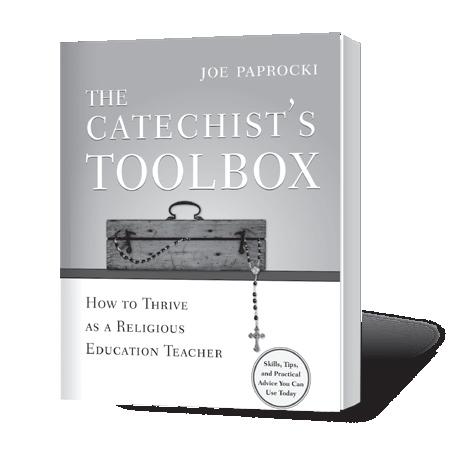
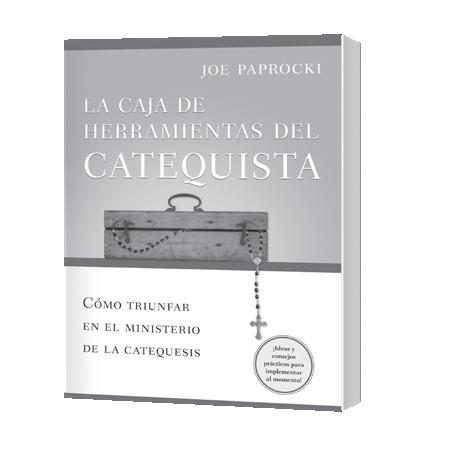
How to Thrive as a Religious Education Teacher
English: PB | 978-0-8294-2451-5 | $9.95
Spanish: PB | 978-0-8294-8294-2767-7 | $9.95
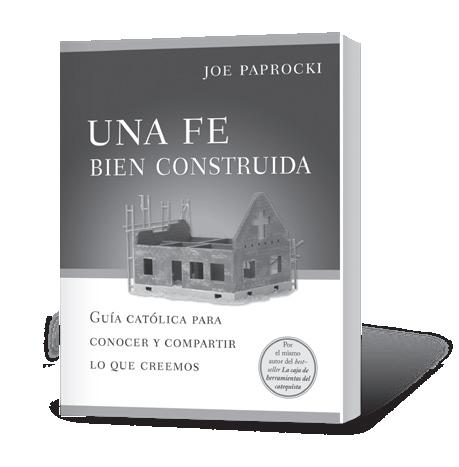



Spiritual Essentials for the Journey
English: PB | 978-0-8294-4246-5 | $9.95
Spanish: PB | 978-0-8294-4421-6 | $9.95

A Catholic’s Guide to Understanding and Embracing God’s Word
English: PB | 978-0-8294-2898-8 | $9.95
Spanish: PB | 978-0-8294-2858-2 | $9.95

A Catholic’s Guide to Knowing and Sharing What We Believe
English: PB | 978-0-8294-2757-8 | $9.95
Spanish: PB | 978-0-8294-3299-2 | $9.95
To Order: Call 800.621.1008, visit loyolapress.com/store, or visit your local bookseller.

Catechesis That Not Only Informs but Also Transforms

English: PB | 978-0-8294-3829-1 | $7.95
Spanish: PB | 978-0-8294-3882-6 | $7.95
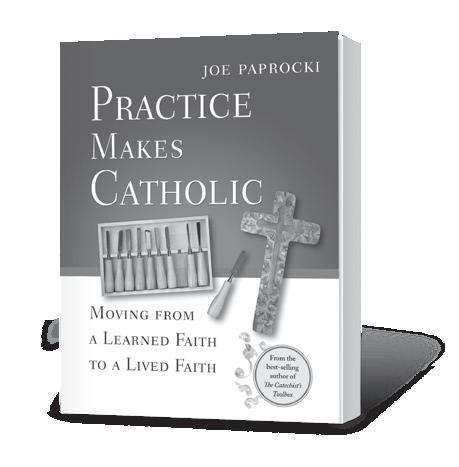
Moving from a Learned Faith to a Lived Faith
English: PB | 978-0-8294-3322-7 | $9.95
Finding God at the Intersection of Heaven and Earth
English: PB | 978-0-8294-4659-3 | $11.95
Spanish: PB | 978-0-8294-4866-5 | $11.95
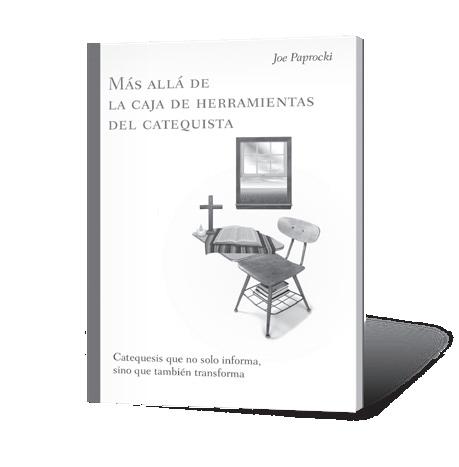
To Order: Call 800.621.1008, visit loyolapress.com/store, or visit your local bookseller.
 Also by Joe Paprocki
Also by Joe Paprocki

52 Ways to Get Mission and Mercy in Motion
This practical resource for parishes includes 52 specific and achievable strategies to help Catholic parishes embody mission, mercy, and evangelization.
PB | 978-0-8294-4405-6 | $15.95
7 Keys to Spiritual Wellness

Enriching Your Faith by Strengthening the Health of Your Soul
Discover a prescription for spiritual health based on the rich wisdom of Catholic Tradition with best-selling author Joe Paprocki as your guide.
PB | 978-0-8294-3689-1 | $12.95
The Transforming Experience of Encountering Christ
Open yourself to encountering Christ, learn to live the Gospel, and evolve into a model of faith inspired by the Holy Spirit by reading the wisdom of Joe Paprocki in Under the Influence of Jesus.
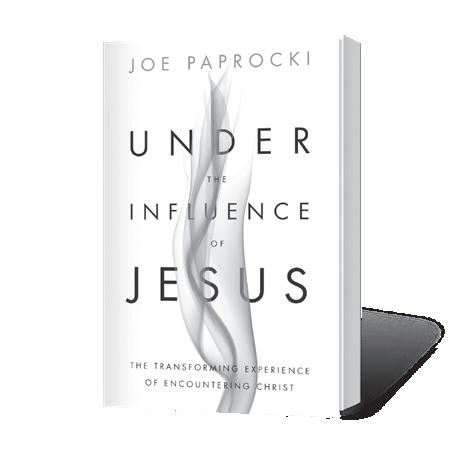
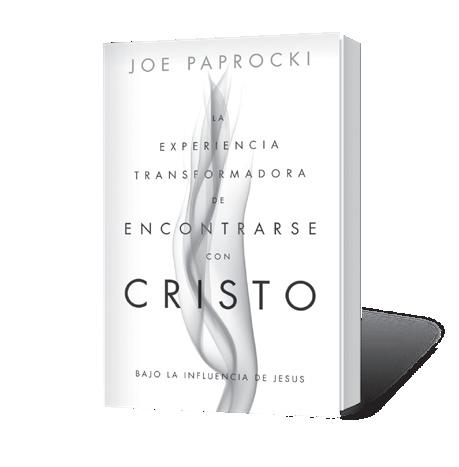
English: PB | 978-0-8294-4050-8 | $15.95
Spanish: PB | 978-0-8294-4211-3 | $15.95


How One Hour a Week Can Change Your Life
Accompanied by Fr. Dominic Grassi, Joe Paprocki illustrates how the one hour at Mass on Sunday can transform the other 167 hours of the week.
English: PB | 978-0-8294-3614-3 | $13.95
Spanish: PB | 978-0-8294-3758-4 | $13.95
To Order: Call 800.621.1008, visit loyolapress.com/store, or visit your local bookseller.

The early followers of Jesus knew that their Good News was indeed unique, unlike any message they’d heard before. They knew Jesus could be trusted and that his words, once planted in a receptive heart, could transform a person’s life. In Preparing Hearts and Minds, Joe Paprocki revisits how the early Church evangelized, identifying nine strategies to help catechists and learners alike. There are concrete ways to share the Gospel so that people can become more open and ready to engage with Jesus, and then share that friendship with others.

Joe Paprocki’s award-winning Toolbox series has helped hundreds of thousands of catechists and teachers pass on a living faith to those they teach. In Preparing Hearts and Minds, he shows you how to share the good news of the Gospel with energy and positivity.
Joe Paprocki, DMin, is National Consultant for Faith Formation at Loyola Press in Chicago. His experience in pastoral ministry spans over four decades, and he has presented in nearly 150 dioceses in North America. Joe is the author of numerous books on pastoral ministry and catechesis, including the bestselling The Catechist’s Toolbox. Joe blogs about his catechetical experiences at www.catechistsjourney.com.
ISBN: 978-0-8294-5003-3